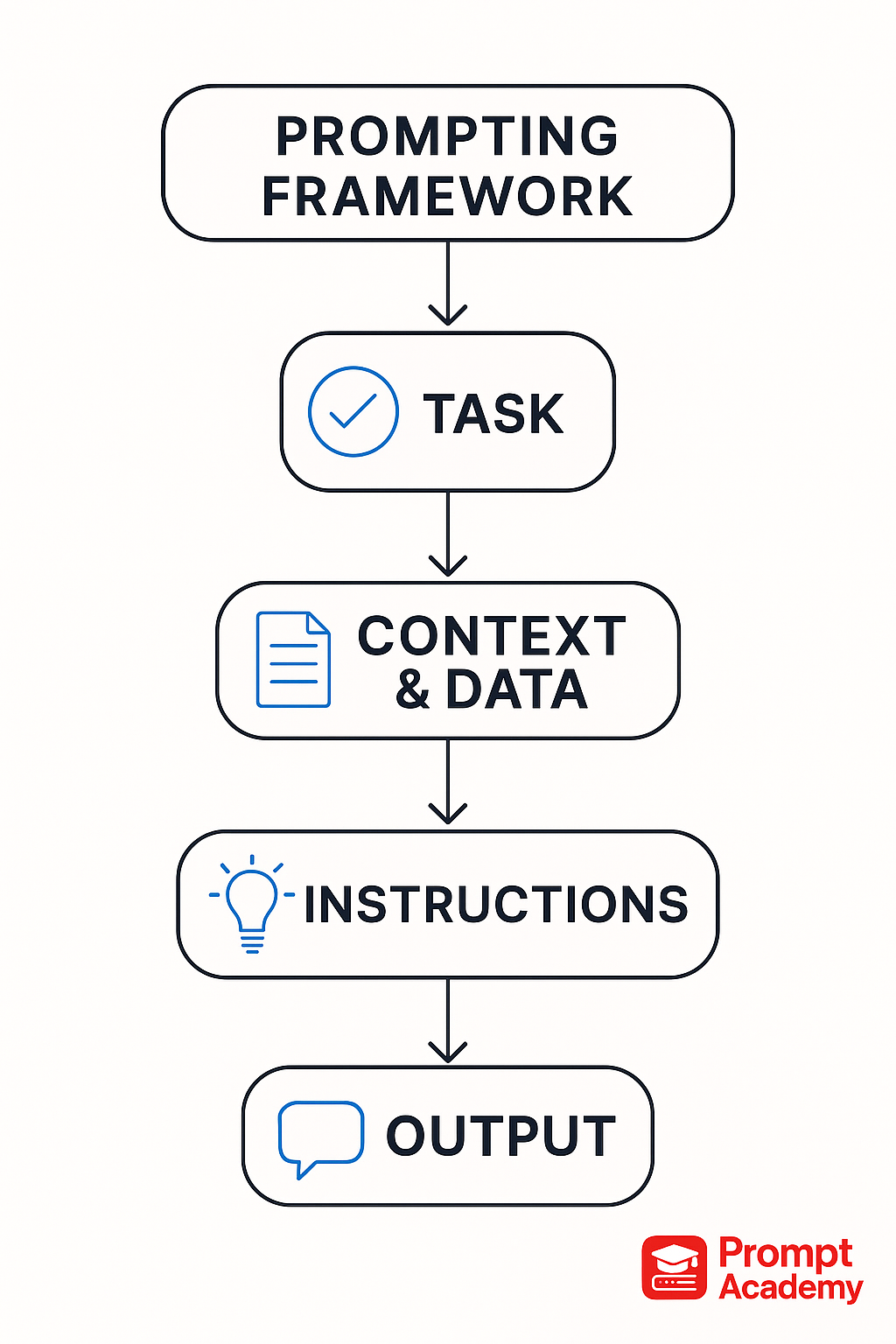The Prompting Framework is the backbone of Prompt Academy — a practical, ethical, and purpose-driven approach to interacting with AI. Rather than relying on copy-paste templates, this framework teaches educators and researchers how to design their own prompts intentionally.
Rooted in classroom practice and shaped by real conversations with students and educators, this framework breaks down prompting into simple, repeatable steps that guide thinking — not just output.
🎯 The Prompting Framework
Prompting is more than just asking AI a question — it’s about guiding the conversation with structure and purpose. The Prompting Framework below helps educators, students, and researchers create better prompts by breaking the process into four intentional steps.
- Task
What do you want the AI to do? Define your main goal clearly — whether it’s summarising, explaining, rewriting, or analysing. - Context & Data
Provide relevant background, topic, or source material. This helps the AI respond with accuracy and relevance. - Instructions
Guide the format, tone, or structure. For example: “Use bullet points”, “Answer in academic tone”, or “Keep it concise”. - Output
Review the result critically. If it’s unclear or incomplete, refine your prompt or ask follow-up questions. Prompting is iterative.
This structured approach ensures that AI responses are aligned with your intention — making your interaction more efficient, ethical, and effective.

🔍 Real Use Case Example
In a Semester 5 civil engineering course, students were assigned an AI-aware reflective task on real-world trusses. Instead of solving textbook problems, they were instructed to find a real truss — either from campus infrastructure or online images — and perform their own structural analysis.
After sketching the free body diagram and calculating internal forces, students were encouraged to prompt ChatGPT to explain or verify their assumptions. One student began with a vague prompt: “Check my truss analysis.” The response was too generic.
After being guided by the Prompting Framework, the student refined it to: “I analysed a Howe truss from the pedestrian bridge near our campus. I assumed pinned joints, but my results show unexpected zero force members. Can you help explain why that might happen in real structures?”
This iterative prompting led to deeper engagement. The student revisited their assumptions, re-examined load paths, and submitted a reflection that demonstrated critical thinking and application of theory to real-world design.
“Using this framework helped me not just ask AI for answers, but to think about the quality of the questions I ask.”
– Final-year student, Semester 5
🌱 Educational Impact
The Prompting Framework doesn’t just help generate better AI responses — it transforms how students learn. It encourages them to think through their own assumptions, articulate clearer intentions, and critically engage with feedback.
Educators report that when students follow this framework, they:
- Ask more refined questions after feedback
- Show greater independence in editing AI drafts
- Demonstrate clearer reflection in assessments
More importantly, it fosters metacognitive thinking — students are not just focused on content, but on the thinking behind the content. In an AI-integrated classroom, this becomes a critical skill: knowing how to prompt is knowing how to think.
More than just a technique, prompting is a mindset shift — from passive consumption to intentional cognition.